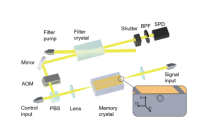Matching Innovation Supply with Demand
The Partner Similarity Index (PSI) offers another perspective on technological positioning. This index measures how well one country’s outbound patent sectors align with the sectors in which another country receives foreign patent applications.
The next two figures illustrate China’s increasing strategic alignment with some advanced economies, as reflected by the PSI. China has increasingly sought patent protection abroad in sectors in which advanced economies receive numerous foreign patent applications. Among these, the U.S. maintains the highest and most stable alignment with China’s strategic patenting choices, consistently around 90%. The U.K. also exhibits high alignment (ranging from 85% to 90%), although its pattern is more volatile. Germany, however, stands out for its notable increase, showing a clear upward trend from 2013 through 2021. This pattern indicates that Germany has become increasingly central to China’s international patent strategy, which might indicate China’s intent to penetrate sectors highly valued and actively protected in European markets.
Partner Similarity Index between China’s Patent Exports and Patent Imports of Selected Advanced Economies
SOURCE: LaBelle, Martínez-Zarzoso, Santacreu and Yotov (2023) and authors’ calculations.
Sectoral Breakdown of the Change in the Partner Similarity Index for China’s Patent Exports, 2013-21
SOURCE LaBelle, Martínez-Zarzoso, Santacreu and Yotov (2023) and authors’ calculations.
NOTE: “Other” includes the following sectors: construction; electricity, gas, steam and hot water supply; manufacture of furniture and manufacturing not elsewhere classified; mining; oil; publishing, printing and reproduction of recorded media; recycling; textile, and water collection, purification and distribution.
Conversely, the next two figures show that advanced economies maintain relatively stable patenting strategies toward China, with Germany showing the strongest increase in alignment after 2018. This selective approach to patent protection in China suggests caution about protecting leading-edge technologies—a pattern that aligns with Federal Reserve research highlighting China’s reduced imports of specialized European products.
Partner Similarity Index between Patent Exports of Selected Advanced Economies and China’s Patent Imports
SOURCES: LaBelle, Martínez-Zarzoso, Santacreu and Yotov (2023) and authors’ calculations.
Sectoral Breakdown of the Change in the Partner Similarity Index for China’s Patent Imports, 2013-2021
SOURCES: LaBelle, Martínez-Zarzoso, Santacreu and Yotov (2023) and authors’ calculations.
NOTE: “Other” includes the following sectors: construction; electricity, gas, steam and hot water supply; manufacture of furniture and manufacturing not elsewhere classified; mining; oil; publishing, printing and reproduction of recorded media; recycling; textile, and water collection, purification and distribution.
Patents as signal of Technological Credibility
Beyond legal protection, patents serve as signals of innovation quality and reliability. In their 2023 paper, Gong and his co-authors found that obtaining patents from advanced economies like the U.S. significantly improves Chinese firms’ credibility in global markets, helping overcome information barriers that might otherwise limit their international expansion.
This quality signaling function is particularly important for firms selling sophisticated products to demanding international customers. As Martínez-Zarzoso and Santacreu explained in their 2024 article, cross-border patenting serves as a strategic signal of innovation quality that benefits companies competing in quality-intensive, differentiated product markets.
The Machinery Sector: China’s Strategic Focus
The machinery sector stands out in both patent and trade data. As shown in all three figures, machinery and equipment technologies drive the increasing similarity between China and advanced economies. This pattern may indicate China’s strategic approach of first developing technological capabilities in targeted machinery sectors, then protecting these innovations through international patent filings, and finally scaling up manufacturing and expanding exports in these same sectors. As a result, China has been positioning in high-value industries where advanced economies have traditionally dominated.
Federal Reserve research confirms this pattern, noting
, particularly in the automotive sector.
From Partnership to Rivalry
China’s transformation from a cooperative economic partner to a technological rival in advanced machinery sectors has significant implications. For advanced economies, international patent activities can serve as early warning signals of competitive shifts, prompting reconsideration of intellectual property policies and innovation protection. Indeed, patent data offers a uniquely revealing window into countries’ technological strategies before these strategies fully manifest in trade statistics or market shares.







